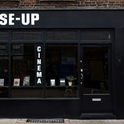Mark Morris seems an unlikely candidate for the recognition normally accorded to film stars or footballers. He is a choreographer working in the valiant but circumscribed domain of contemporary dance. The camp and gender-bending in his work should make him a cult figure, not a mainstream personality bringing dance to uninitiated audiences.
Yet Morris appeals across generations and attitudes to a broader constituency than any other living choreographer. He is in danger of becoming as ubiquitously popular as the late George Balanchine. Besides working with his own Mark Morris Dance Group (since 1980), he has choreographed and directed opera, made ballets for major classical companies and created many pieces for the White Oak Dance Project, which he co-founded with Mikhail Baryshnikov. But it's not just a matter of being prolific; people actually like what he does.
When he made his Edinburgh festival debut in 1992, he was such a hit that they invited him back for five successive years, and The Hard Nut (created in 1991 when he and his company were based at Brussels's Théâtre Royal de la Monnaie) was the biggest hit of the 1995 festival. This updated Nutcracker typifies the wacky Dionysian side of Morris's genius, and makes its English premiere at Sadler's Wells this month. Referring back to the dark heart of Hoffmann's original tale and aided by the set design of horror-comic strip artist Charles Burns, Morris presents a vision that is, in his words, "funny, sexy, scary, tender." The Christmas party of traditional Nutcrackers is replaced by a new world order of tasteless 1960s America suburbia peopled with grotesques worthy of a David Lynch movie - blithely crass, loudly ugly, hilariously debauched. Yet inside the horror is the gleam of beauty, as represented by Marie, the family's middle child, who finds her prince at the end, after a Snowflakes dance performed by men and women identically dressed in puffy little tutus and a Waltz of the Flowers that is a kitsch fertility rite, with nature's children in floaty chiffons twining and coupling.
Morris doesn't set out to be confrontational: he just does things his own forthright way, sugaring the crudeness with his remarkable musicality.
For Morris, dance comes out of music of all kinds, from rock to Brahms, from Lou Harrison to his much-loved baroque composers. His choreography is rigorously structured yet accessible, articulated in a lithely adaptive, self-made language that mirrors Morris's own eclectic training. Sometimes it is balletic, sometimes faux-naif, with the linear, rhythmic floor-patterns of folk dance (a legacy of his days with a Balkan folk dance group). He used this last manner for his most famous work, L'Allegro, il penseroso ed il moderato (created in 1988 to Handel's setting of Milton), which uplifts audiences with its massed lines and vivid pictorial gestures.
It looks like the kind of dance anyone could do - except that of course it isn't. The members of Morris's company look like people off the street, but they are highly trained dancers who submit to Morris's gruelling perfectionism. He doesn't spare himself either. In Three Preludes (1992), his dapper phrasing to Gershwin was unmatched by even Baryshnikov in the same solo. In Purcell's Dido and Aeneas (1989), he played both the noble Dido and obscene Sorceress, but then he's always had a weak spot for cross-dressing on stage. And in a 1991 performance of The Hard Nut, there were few sights more memorable than Morris bounding lightly on his beefy bare legs in the Waltz of the Flowers.
The Hard Nut is at Sadler's Wells, 12-27 November












